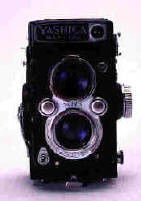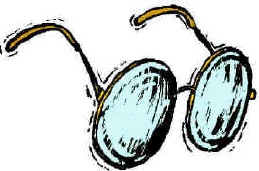BACKGROUND:
Lenses are used in our society in
many ways. They are usually hidden, but the power to move and
concentrate light is very useful and necessary in our society. The most
important lens to humans is the one in each of our eyes. Without it we
could not see.
Lenses have the ability to
concentrate or diffuse light, while changing the path of how light
travels. Lenses not only can move light, but all other components of the
electromagnetic wave spectrum. Lenses are powerful in our society.
PROCEDURE:
During
lab students have seen how light can move things. In this section
students look at different items and see if they can locate where lenses
may be located.
-
 Use a pair of
Use a pair of  glasses
and ask students where are the lenses? The glass (or plastic)
are just lenses. They are what are
called convex-concave, which means that one side bulges out a
little and the other
side is scooped inward. These lenses can help correct our eye’s
lenses, to improve our vision. Bring other items into the class like
a camera or binocular. A camera captures an image on film through a
series of lenses. A binocular has several lenses inside that make a
far object appear closer.
glasses
and ask students where are the lenses? The glass (or plastic)
are just lenses. They are what are
called convex-concave, which means that one side bulges out a
little and the other
side is scooped inward. These lenses can help correct our eye’s
lenses, to improve our vision. Bring other items into the class like
a camera or binocular. A camera captures an image on film through a
series of lenses. A binocular has several lenses inside that make a
far object appear closer.
-
Give students the worksheet and
see if they can determine where the lenses are. In the overhead
projector each of the glasses, act as lenses to concentrate light
and then project the image. The hand lenses is actually a biconvex
lenses. In the microscope and telescope, there are a series of
lenses our the outside and inside.